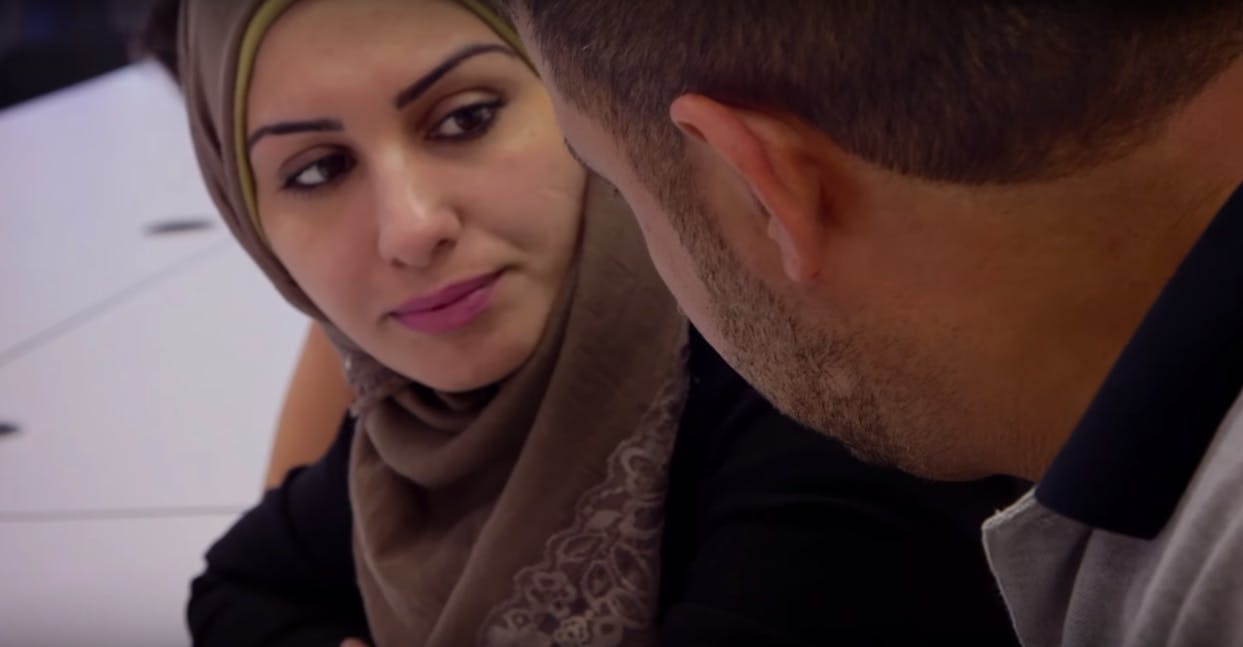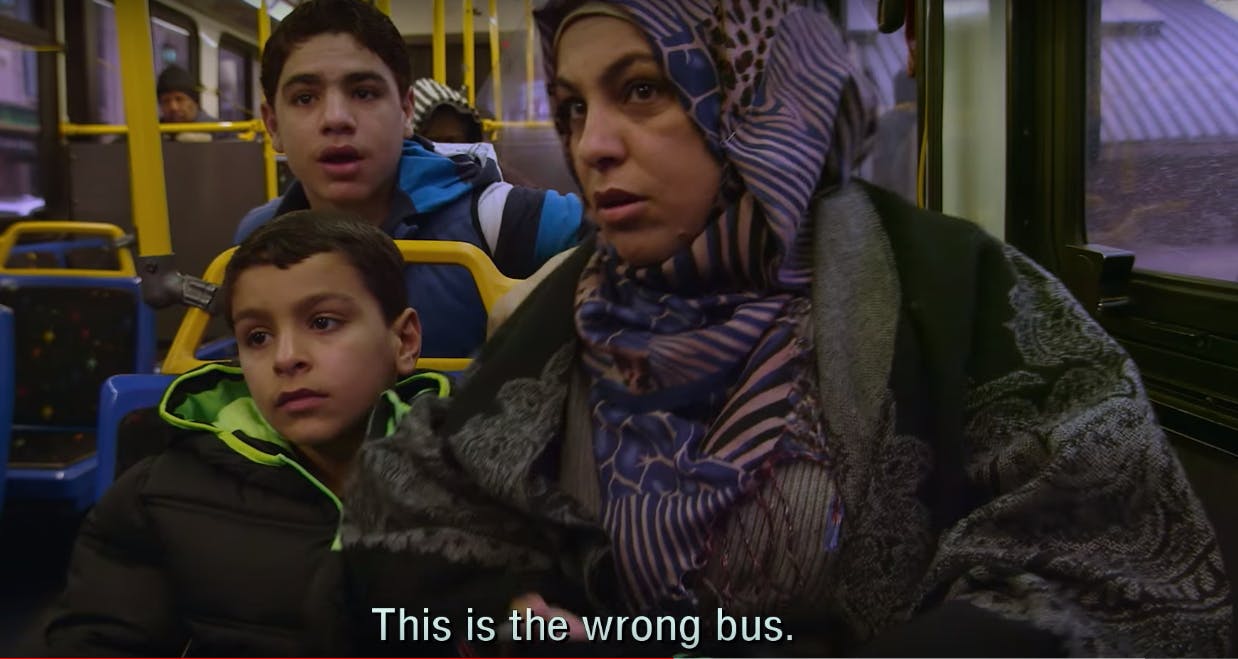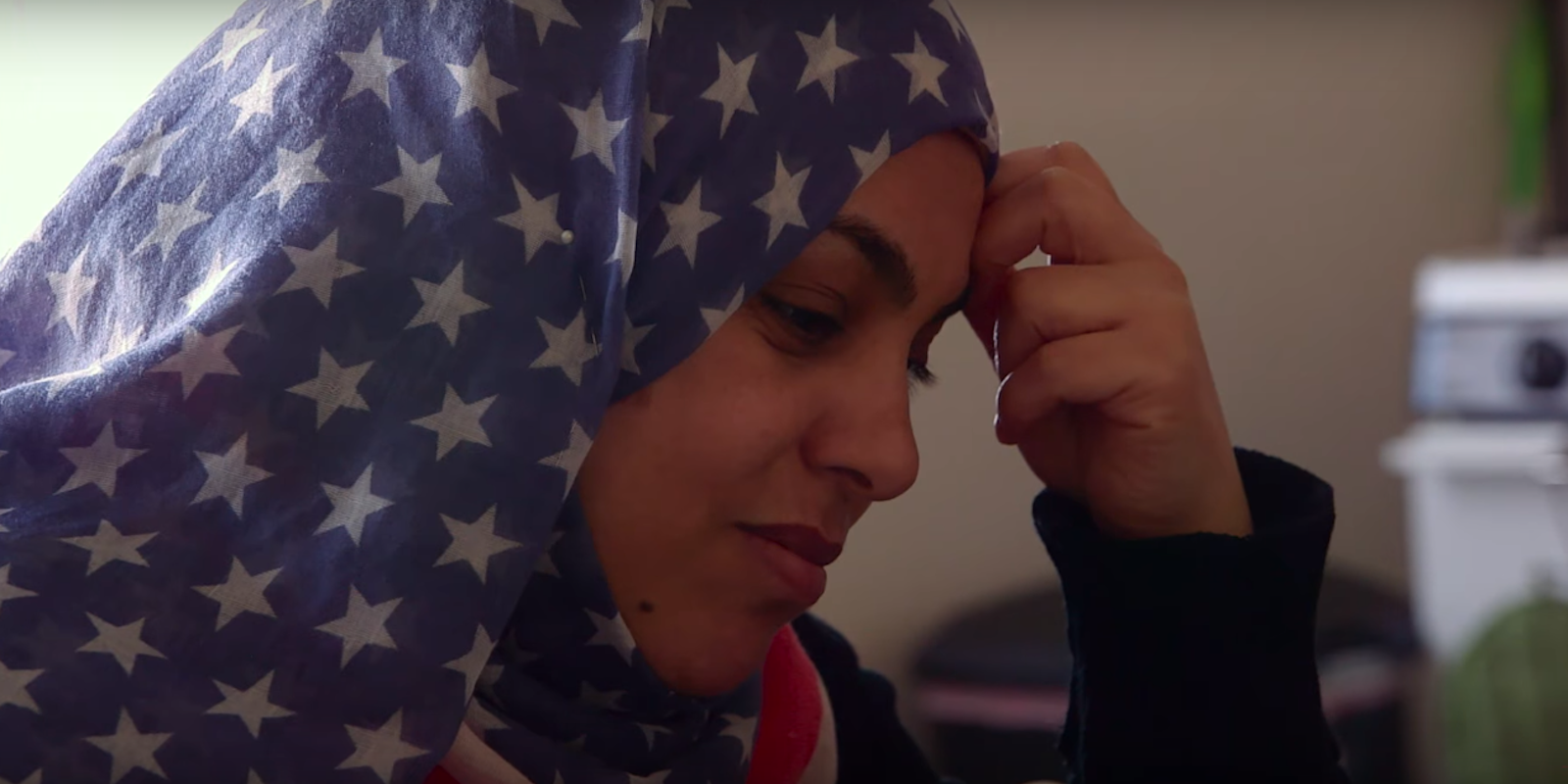Epix’s This Is Home: A Refugee Story focuses on the human element.
Following four Syrian families as they struggle to find their way in Baltimore, director Alexandra Shiva creates an intimate portrait of the global immigration crisis on a person-to-person level. The enormity of the problem is still there, but by bringing it down to focus on the individuals, rather than entire populations, she’s able to shed light on what often seems like a hopeless situation. The Daily Dot spoke to Shiva about how she did just that in advance of the film’s television premiere.
You started your career with Bombay Eunuch. Then you shifted to smaller docs focused on subcultures in the United States, like Stagedoor and How to Dance in Ohio. This Is Home feels very intimate, but it’s also dealing with this huge, global issue. Was the balance of those two things intentional on your part?
I definitely have a specific desire to make films that are intimate portrayals of people that an audience might not get to meet otherwise… If I had remembered how hard subtitles were, I’m not sure I would’ve started (laughs). I think I can only do it once every 15 years. It’s really intense… you always have to have an interpreter with you… But I think the stories have a commonality.
There are so many docs out there about the current refugee crisis, from Fire At Sea to Human Flow. Why did you decide to make another one, and what did you do, if anything, to make sure it stood out?
The subject matter was actually brought to me by Princess Firyal of Jordan, who actually said that she wanted me to make a film that had a similar quality to How to Dance in Ohio. Which from what I understood, was something really intimate, which created an opportunity for a viewer to be in someone’s home, in someone’s life, in a way that doesn’t feel like you’re looking at them, you’re walking alongside them… One of the things I just found really difficult is just the sheer numbers of the refugee crisis. It’s so overwhelming, there are so many countries… There’s a kind of shut-off that happens for people, and I wanted to see what it would take to get beyond the shut-off button… The more films that come at the crisis from different angles the better.

Can you talk a little bit more about the involvement of Princess Firyal of Jordan?
She came to me having seen my previous films, and she’s very involved with refugee resettlement all over the world… It was very important to her, and she came on as an executive producer. We agreed that the intimate approach would be something new, something different, and that character-driven stories are really a way to illuminate situations. And then Jason Blum [of Blumhouse] got involved around that same time. I’ve made my last three films with him.
Why did you decide to focus specifically on the refugee population in Baltimore?
I think Baltimore is a fascinating city. I did sort of look into different IRC offices, and the Baltimore office was really interesting… it felt very connected to the community… About a third of the people working there were former refugees themselves… There’s something about a city that’s always trying to rebuild itself. With the refugees trying to rebuild their lives, that connection, I thought, was really interesting.
There was something very relatable about Mohammed, just as this teenager, trying to fit in at school. At some point, we were all in that position. Were you struck by any of that while filming?
I definitely think that one of the most important things, just in terms of a driving force of making a film, is to focus on commonalities, to focus on things that are universal, wherever possible. I think if you’re trying to connect with other people, that people don’t necessarily think they’re going to relate to, the way to do that is through showing our similarities instead of our differences. And I agree that in many, many ways, Mohamed is just very a typical teen. He’s trying to fit in, he’s trying to make friends… But there’s this intense, added layer. Everyone in his family is learning English after him, he’s the eldest male, he has to accompany his mother wherever she needs to go. And at the same time, he’s the one who’s old enough to remember being in Syria, so there’s some post-traumatic stress there for sure.
Similarly, there are some funny moments with the two sisters in the film. But obviously, their story, like Mohamed’s, is also serious. How did you balance those two things?
I actually think it’s both. I was surprised to find how much all the families used humor in different ways to get by, and that they all had a lot of things in common. In some ways, the ridiculousness of their situation requires that they are able to laugh at it. That is part of resilience. So we were very conscious of threading it throughout because I do think that’s part of making the story manageable for the viewer.
The journey of Khaldoun struck me most of all. His background as a torture survivor, and then in America, the way he eventually changes his stance on issues like women working. Was it intentional, on your part, to track that change?
The women were adapting in one way, and the men were struggling in very different ways. There’s an intense dignity preservation piece that comes up with the men. They are trying to preserve cultural norms… Imagine you go to a country that’s not your own, you don’t have a choice in leaving, and then there’s the language, and you’re told to leave your culture at the door… I can’t speak for all the families but I felt that the men definitely had a harder time… I think we wanted to show that evolution. At the end, he’s teaching Jaslene to drive, which is something he would never have been doing before.

People always ask where the line is, in documentary filmmaking, between a director and their subjects? Where is that line for you, and where there any moments making this movie where that was challenged?
You can’t have intimacy read on-screen unless you create an intimacy. I had to create an intimacy that has boundaries. But for me, I found it incredibly difficult to bear witness to their struggles; I found it more challenging in this film than any other I’ve ever done. Because they were really actively struggling, and to not make things a little easier is hard… And to be available and open and connecting, and someone they can trust, and they can know. I have relationships with people from all the films I’ve done, except Bombay Eunuch, because… many in the film have died, but… I will always very close relationships with the families of This Is Home.
What do you hope to tackle next time you make a documentary?
The next film is going to be located in New York City, where I live. And it’s going to be in English. Maybe even slightly less complex in terms of the number of people I’m filming… When you’re filming these many people, you have to understand it in a way where people know the layout of the entire community, which is something that’s very similar in all my films.
The documentary won the audience award at Sundance and is premiering on Epix in June. How do you feel about the current state of the documentary world, especially in an age where Netflix is basically just eating everything?
I think that it’s an exciting time for documentaries because there are a lot of films, and there are a lot of ways for people to see them. There are ever-changing distribution models, but I think the content is getting better. I don’t think there’s going to be any sort of slow-down with documentaries… It’s constantly shifting and changing. It’s a completely different landscape this year than it was last year.


